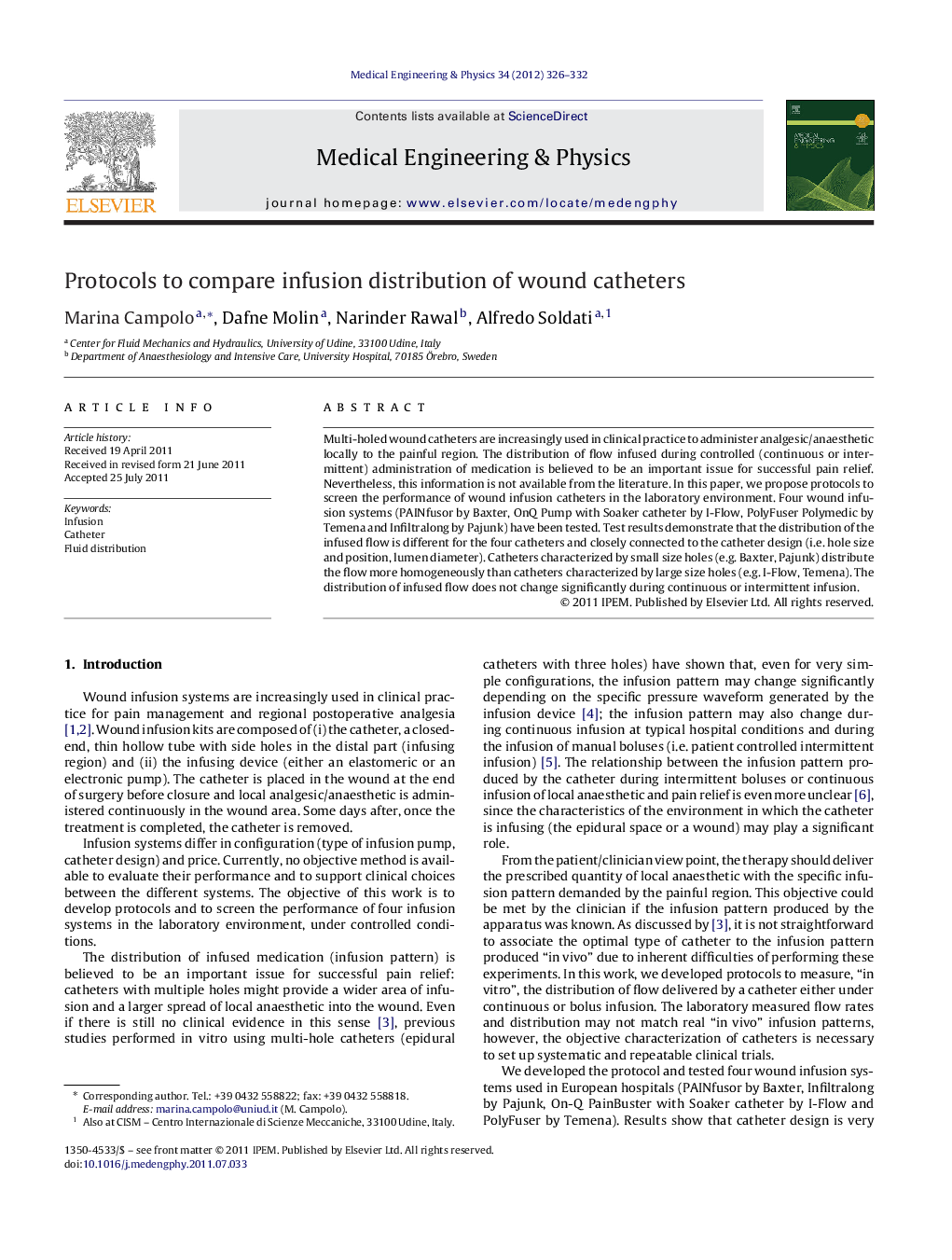| Article ID | Journal | Published Year | Pages | File Type |
|---|---|---|---|---|
| 876363 | Medical Engineering & Physics | 2012 | 7 Pages |
Multi-holed wound catheters are increasingly used in clinical practice to administer analgesic/anaesthetic locally to the painful region. The distribution of flow infused during controlled (continuous or intermittent) administration of medication is believed to be an important issue for successful pain relief. Nevertheless, this information is not available from the literature. In this paper, we propose protocols to screen the performance of wound infusion catheters in the laboratory environment. Four wound infusion systems (PAINfusor by Baxter, OnQ Pump with Soaker catheter by I-Flow, PolyFuser Polymedic by Temena and Infiltralong by Pajunk) have been tested. Test results demonstrate that the distribution of the infused flow is different for the four catheters and closely connected to the catheter design (i.e. hole size and position, lumen diameter). Catheters characterized by small size holes (e.g. Baxter, Pajunk) distribute the flow more homogeneously than catheters characterized by large size holes (e.g. I-Flow, Temena). The distribution of infused flow does not change significantly during continuous or intermittent infusion.
